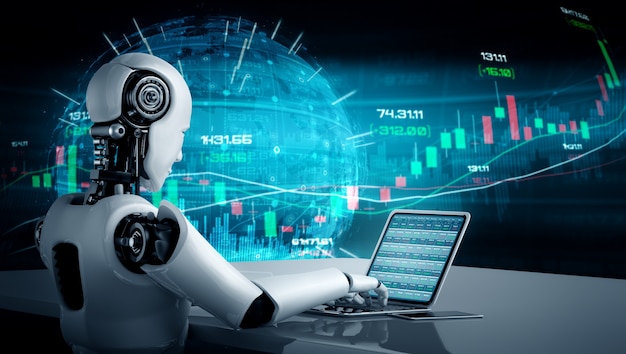Speed vs Scrutiny: How AI is Revolutionizing Crime Analysis?

Crime analysis has traditionally been a labor-intensive process, relying on investigators to sift through mountains of data to identify patterns and connections. However, the emergence of Artificial Intelligence (AI) is transforming this field, offering significant advantages in terms of speed, accuracy, and efficiency.
The Rise of AI-powered Crime Analysis Tools
Companies like iAcuity Fintech are at the forefront of this revolution, developing innovative AI-powered solutions to empower law enforcement agencies. Their flagship product, Fund Trail, exemplifies the potential of AI in tackling complex financial crimes.
How AI is Supercharging Crime Analysis
Here’s how AI is revolutionizing crime analysis, particularly in the realm of financial crimes:
- Automated Data Processing: AI algorithms can analyze vast datasets of financial transactions, including:
- Bank statements
- Wire transfers
- Credit card transactions
- Loan applications
- Pattern Recognition: AI excels at identifying suspicious patterns in financial data, such as:
- Unusual account activity
- Large or frequent cash deposits or withdrawals
- Transactions with known shell companies or individuals on sanctions lists
- Inconsistencies between loan applications and financial statements
These patterns can be crucial for investigators in uncovering:
- Money Laundering: AI can track the movement of funds through complex financial networks, helping investigators identify attempts to legitimize illegal gains.
- Fraudulent Schemes: By analyzing transaction patterns, AI can detect anomalies that might indicate fraudulent activity, such as Ponzi schemes or embezzlement.
- Terrorism Financing: AI can identify suspicious financial transactions linked to terrorist organizations, helping law enforcement disrupt their funding sources.
Benefits of AI in Crime Analysis
The integration of AI into crime analysis offers several key benefits, particularly for financial crimes:
- Faster Investigations: By automating the analysis of financial data, AI can significantly accelerate investigations into financial crimes. This allows law enforcement to identify and apprehend criminals more quickly.
- Improved Case Resolution Rates: The ability to identify hidden patterns and connections in financial transactions can lead investigators to crucial evidence that might otherwise be overlooked. This can significantly improve case resolution rates for financial crimes.
- More Effective Resource Allocation: Predictive analytics based on AI can help law enforcement focus resources on areas with a higher risk of financial crime activity.
Real-World Examples
Here are some real-world examples of how AI-powered crime analysis tools are being used to combat financial crimes:
- Anti-Money Laundering (AML) Compliance: Financial institutions are increasingly using AI to monitor transactions for suspicious activity and comply with AML regulations.
- Securities Fraud Investigations: Regulatory bodies are utilizing AI to analyze trading data and identify potential market manipulation or insider trading activity.
- Tax Evasion Investigations: Tax authorities are employing AI to analyze tax returns and identify discrepancies that might indicate tax evasion.
The Future of AI in Crime Analysis
As AI technology continues to develop, we can expect even more powerful tools to emerge. These tools will not only improve the efficiency and accuracy of crime analysis but also offer new capabilities like:
- Real-time Crime Detection: AI-powered systems could analyze data streams in real-time to identify potential crimes as they are unfolding.
- Facial Recognition and Object Detection: Advanced algorithms will enhance facial recognition and object detection capabilities, aiding in suspect identification and evidence gathering.
The Road Ahead
The integration of AI into crime analysis is a significant advancement in law enforcement. While AI is a powerful tool, it is important to remember that it should be used responsibly and ethically. Law enforcement agencies need to ensure that AI systems are unbiased and transparent in their operation.
By leveraging the power of AI while upholding ethical principles, law enforcement can build a safer future for all.


